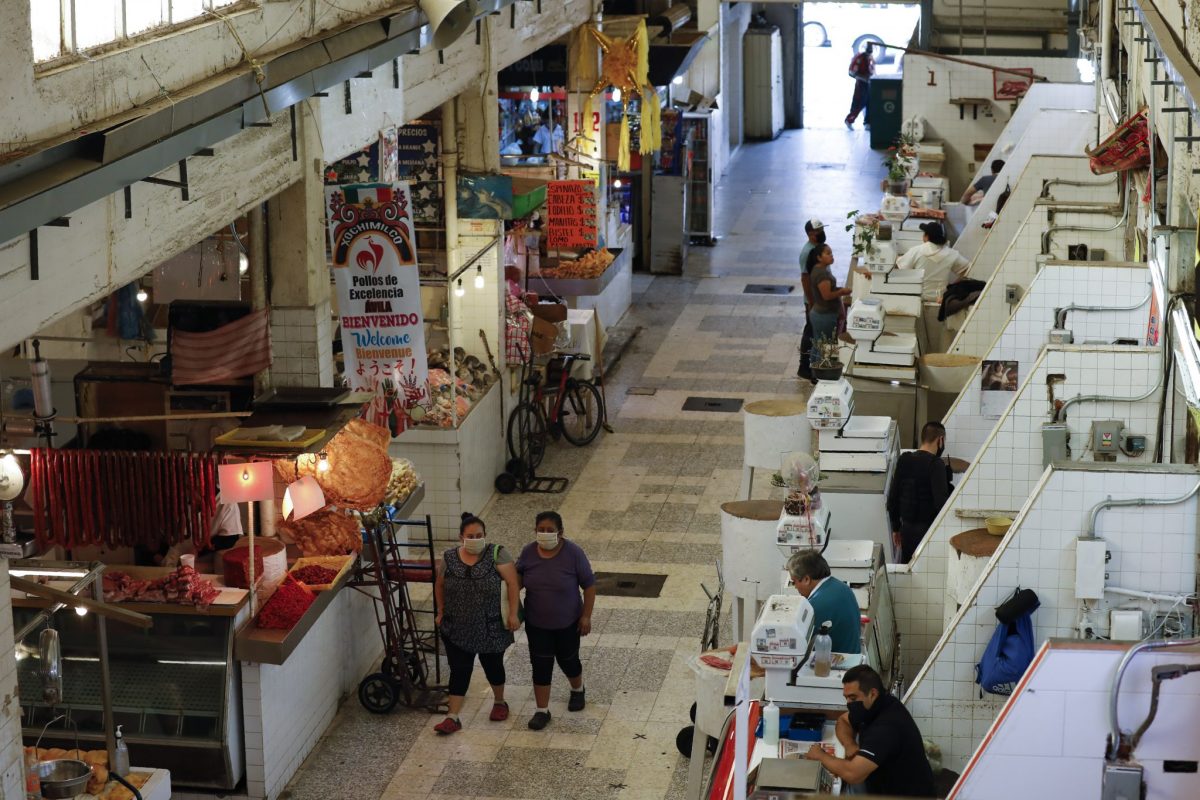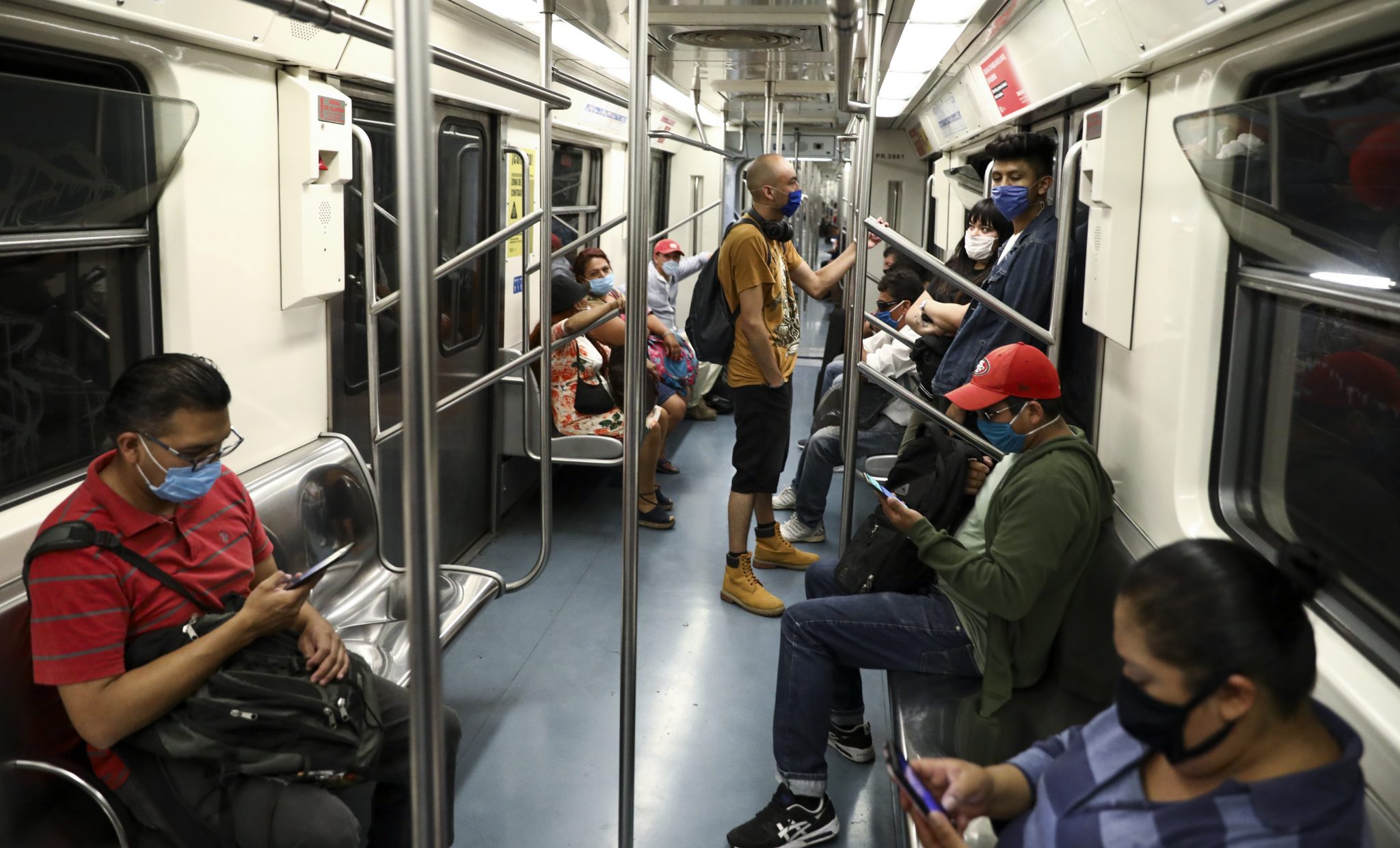

Customers walk through a partially-open public market in the Xochimilco district of Mexico City, Friday, May 15, 2020. As Mexico moves toward a gradual reactivation of its economy Monday, the number of new coronavirus infections grows higher every day, raising fears of a new wave of infections that other countries have seen after loosening restrictions. (AP Photo/Rebecca Blackwell)
By CARLOS RODRÍGUEZ Associated Press
MEXICO CITY (AP) — Local governments across Mexico pushed back Monday against President Andrés Manuel López Obrador’s call to reopen the economy in some 300 townships that do not have active cases of coronavirus, with leaders saying they preferred to wait until June before resuming normal activities.
Mexico, which has reported nearly 50,000 total cases and some 5,000 deaths, has seen a steep climb in new infections. Front-line doctors fear that a premature reopening could lead to a second wave of infections—a scenario that recently played out in Chile and Guatemala, where governments had to roll back reopening plans.
But López Obrador has been pushing to reactivate the economy. In addition to opening virus-free communities, his health advisers have said that the mining, construction and automotive industries could resume operations as early as Monday.
The country’s lockdown —which began in March— will remain in place, but those industries will be allowed to return to production because Mexico’s top advisory body on the pandemic, the General Health Council, had decided to classify them as “essential activities.”
“Today productive social activity has already started to open where it was agreed, and they can start classes,” López Obrador said. “We are talking about around 300 townships where there are no infections.”
But in most approved areas, the president’s words did not result in any changes.


Commuters wearing masks against the spread of the new coronavirus ride the subway in Mexico City, Thursday, May 14, 2020. (AP Photo/Eduardo Verdugo)
In the southern state of Oaxaca, which has more than 200 of the infection-free townships, Gov. Alejandro Murat said in a video address Sunday that after consultations with other communities, officials decided to wait until June 1 to begin evaluating whether to resume economic activity.
Murat said students would not return to class Monday even in communities without confirmed cases of the virus.
In neighboring Guerrero, Gov. Hector Astudillo said it remained unclear when students could return to classes.
“We are not going to return to classes on the 18th in any township, and there aren’t conditions to do it June 1 either,” he said. Guerrero had 12 townships on the federal government’s approved list, but Astudillo said that really it was 10, because two were adjacent to communities in Oaxaca with confirmed cases.
The state’s mining and construction sectors were also preparing for a June 1 start, Astudillo said.
The western state of Jalisco was keeping schools closed in its approved communities, but allowing work to resume in some sectors of the economy.
Gov. Enrique Alfaro, who has publicly disagreed with some moves by federal health officials, announced that some “non-essential” businesses that do not generate crowds, as well as services like plumbing and landscaping and beauty salons would be allowed to reopen.
“Here there are not townships that open and others that don’t,” Alfaro said, noting that the issue should not be for a Mexico City bureaucrat to decide. “It’s a serious mistake this idea of opening some townships and not others. That decision isn’t going to happen in Jalisco, nor be followed.”
The precariousness of the endeavor was displayed Sunday night, when López Obrador’s point man on the virus, Health Undersecretary Hugo López-Gatell, said in the middle of his daily COVID-19 news conference that he was removing a township from the list.
During the presentation, he had received word from Guerrero’s health secretary that one of the approved communities now had an infection case, he said.
By the end of his news conference, a reporter alerted him to another community in Oaxaca that may have to be removed from the list. He said it was going to be a dynamic situation.
“If this happens tomorrow, it will be suspended where cases are detected,” López-Gatell said.


